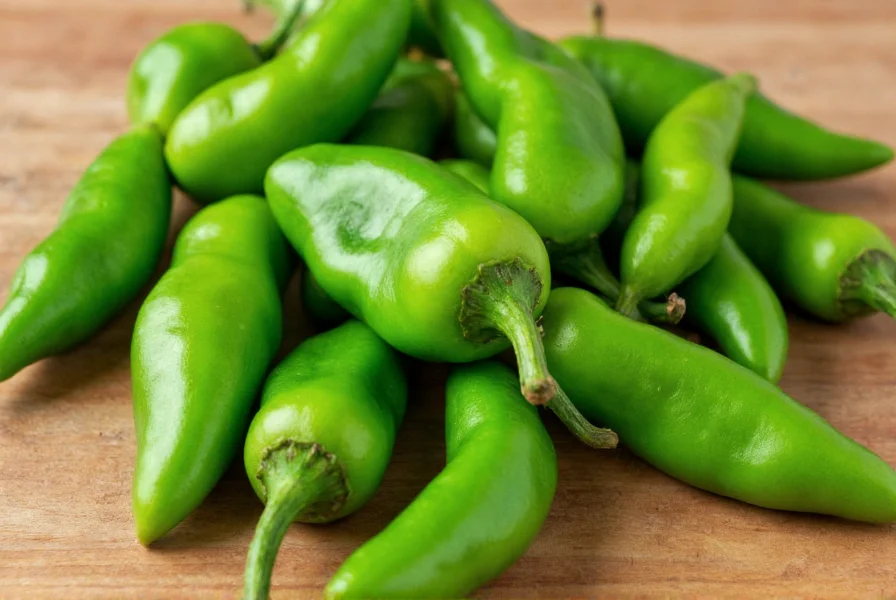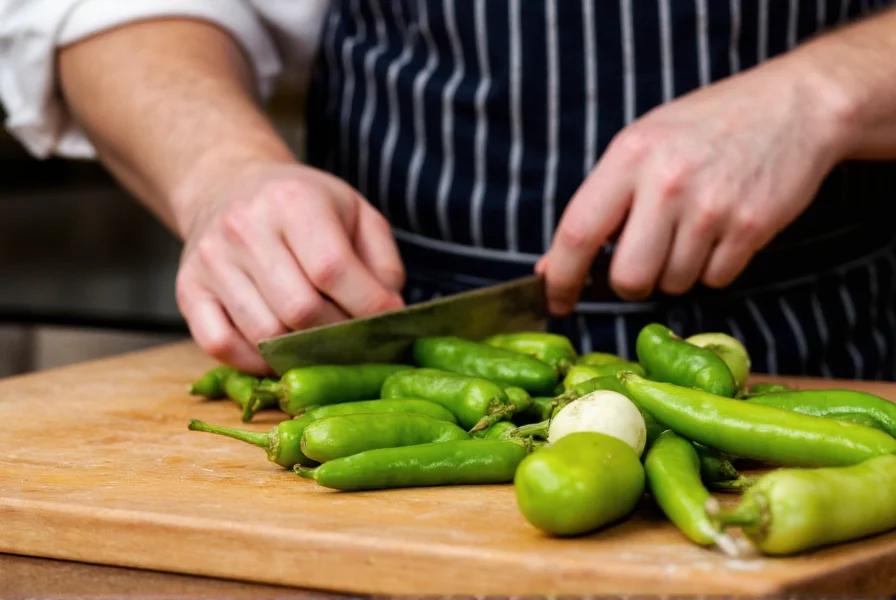Green chilli peppers represent one of the most widely used fresh peppers in global cuisine, prized for their distinctive flavor profile and culinary versatility. Unlike their fully ripened red counterparts, green chillies are harvested early in the maturation process, resulting in unique characteristics that make them indispensable in many traditional dishes. Understanding the specific attributes of fresh green chilli peppers helps both home cooks and professional chefs maximize their potential in the kitchen while benefiting from their impressive nutritional profile.
Understanding Green Chilli Pepper Characteristics
Green chilli peppers maintain their signature color because they're picked before the natural ripening process turns them red, orange, or yellow. This early harvest creates several distinctive features:
- Flavor profile: Bright, grassy notes with citrus undertones
- Texture: Crisp and firm compared to softer ripe peppers
- Heat level: Generally milder than fully matured versions of the same variety
- Moisture content: Higher water content contributing to freshness
The heat measurement of green chilli peppers varies significantly by variety. While jalapeños typically range from 2,500-8,000 Scoville Heat Units (SHU), serranos reach 10,000-23,000 SHU, and Thai bird's eye chillies can exceed 50,000 SHU even in their green stage. This variation explains why understanding specific green chilli pepper types matters for successful cooking.

Nutritional Benefits of Green Chilli Peppers
Green chilli peppers deliver impressive nutritional value beyond their heat. A single medium jalapeño (14g) contains:
| Nutrient | Amount per Pepper | % Daily Value |
|---|---|---|
| Vitamin C | 23.5 mg | 39% |
| Vitamin A | 325 IU | 11% |
| Vitamin B6 | 0.1 mg | 4% |
| Vitamin K | 2.4 mcg | 3% |
| Capsaicin | Varies by variety | N/A |
The capsaicin in green chilli peppers offers multiple health advantages including metabolism boosting, pain relief properties, and potential cardiovascular benefits. Research published in the Journal of Agricultural and Food Chemistry confirms that capsaicinoids in fresh green chillies demonstrate significant antioxidant activity, helping combat oxidative stress in the body.
Common Green Chilli Pepper Varieties
Understanding the different types of green chilli peppers helps select the right variety for specific culinary applications:
- Jalapeño: Medium heat (2,500-8,000 SHU), thick walls, ideal for stuffing and salsas
- Serrano: Hotter than jalapeños (10,000-23,000 SHU), thinner walls, perfect for fresh salsas
- Thai Bird's Eye: Very hot (50,000-100,000 SHU), small size, essential in Southeast Asian cuisine
- Poblano: Mild heat (1,000-2,000 SHU), large size, excellent for roasting and stuffing
- Cubanelle: Very mild (100-1,000 SHU), sweet flavor, great for frying
When selecting fresh green chilli peppers, look for firm, glossy skins without wrinkles or soft spots. The stems should appear fresh and green, not dried or brown. Properly stored green chillies maintain quality for 1-2 weeks in the refrigerator's crisper drawer.
Culinary Applications for Green Chilli Peppers
Green chilli peppers enhance dishes through multiple preparation methods:
- Raw applications: Finely diced in salsas, guacamole, or salads
- Roasted: Charred over open flame for smoky flavor in sauces and fillings
- Stuffed: Filled with cheese, grains, or meats then baked
- Pickled: Preserved in vinegar for tangy condiments
- Blended: Pureed for soups, sauces, and marinades
Chefs specializing in regional cuisines note that the fresh green chilli pepper nutritional value remains highest when used raw or lightly cooked. Prolonged cooking reduces vitamin C content but can mellow the heat while developing deeper flavors. When working with particularly hot varieties like Thai green chillies, wearing gloves prevents skin irritation from capsaicin oils.

Storage and Handling Best Practices
Proper storage extends the shelf life of green chilli peppers while maintaining their quality. Store unwashed peppers in the refrigerator's crisper drawer inside a paper bag to absorb excess moisture. This method keeps them fresh for 1-2 weeks. For longer preservation, consider these options:
- Freezing: Roast, peel, and freeze in airtight containers for up to 6 months
- Pickling: Preserves for 6-12 months in vinegar-based solutions
- Drying: String and air-dry or use a food dehydrator for concentrated flavor
When handling hot green chilli peppers, always wash hands thoroughly after preparation and avoid touching your face. The capsaicin oils can cause significant irritation to eyes and sensitive skin. If you experience burning sensations, dairy products like milk or yogurt provide immediate relief by binding to the capsaicin molecules.
Substituting Green Chilli Peppers
When fresh green chilli peppers aren't available, consider these substitutions based on your recipe's requirements:
- For mild heat: Green bell peppers with a pinch of cayenne
- For medium heat: Poblano peppers or Anaheim peppers
- For hot applications: Fresh serranos or a combination of jalapeño and a dash of hot sauce
- For roasted flavor: Canned green chiles (like Hatch)
Understanding the difference between green and red chilli pepper characteristics helps make appropriate substitutions. Green peppers offer brighter, grassier notes while red peppers provide sweeter, fruitier flavors with often increased heat.
Frequently Asked Questions
What's the difference between green and red chilli peppers?
Green chilli peppers are harvested before full ripening, resulting in a brighter, grassier flavor and generally milder heat. Red chilli peppers are fully ripened versions of the same cultivar, offering sweeter, fruitier notes with often increased heat levels and different nutritional profiles.
Are green chilli peppers healthy to eat daily?
Yes, green chilli peppers provide significant health benefits when consumed in moderation. They're rich in vitamins C and A, contain capsaicin with metabolism-boosting properties, and offer antioxidant compounds. However, excessive consumption may cause digestive discomfort for sensitive individuals.
How can I reduce the heat of green chilli peppers?
Remove the white membranes and seeds where most capsaicin concentrates. Soaking chopped peppers in salt water or milk for 10-15 minutes reduces heat. Cooking methods like roasting or boiling also mellow the spiciness. Pairing with dairy products like yogurt counteracts the burning sensation when eating.
Which green chilli pepper variety is best for beginners?
Poblano peppers offer the mildest heat (1,000-2,000 Scoville units) among common green varieties, making them ideal for beginners. Cubanelle and Anaheim peppers also provide gentle heat levels with sweet flavor profiles that work well in various dishes without overwhelming spice.











 浙公网安备
33010002000092号
浙公网安备
33010002000092号 浙B2-20120091-4
浙B2-20120091-4